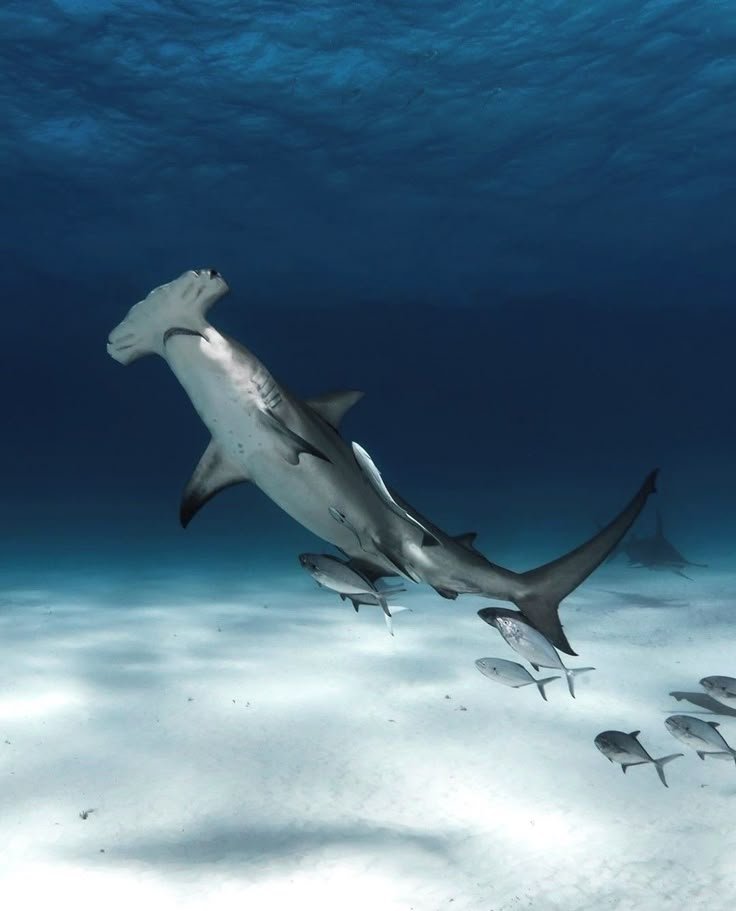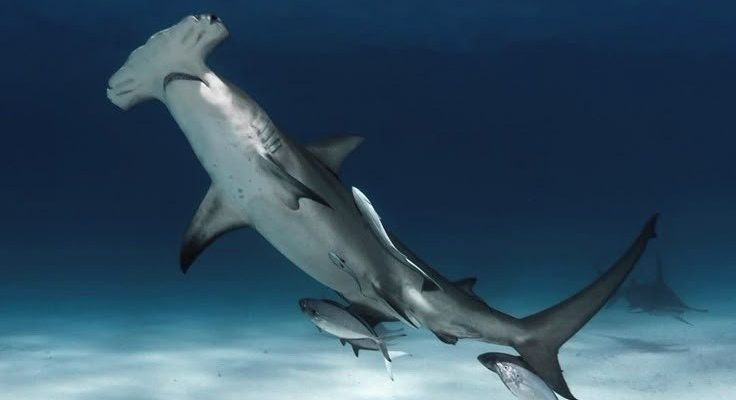
Imagine a bustling city where everyone has a role to play. If one job is neglected, the whole system can fall apart. Similarly, hammerhead sharks contribute to the health of their underwater communities. By understanding their place in the ecosystem, we can appreciate just how vital they are to the health of our oceans.
Understanding Hammerhead Sharks
Before diving into their ecological role, let’s take a moment to understand hammerhead sharks better. There are several species of hammerhead sharks, but the Great Hammerhead is the largest, reaching lengths of up to 20 feet. These sharks have distinctive hammer-shaped heads, which give them better vision and help them track down prey. Their unique shape helps them detect the electrical signals emitted by their prey, making them adept hunters.
Hammerhead sharks are primarily found in warm waters and are often seen in coastal areas. They tend to form schools, especially during the day, which can range from just a few to over a hundred individuals. This social behavior helps protect them against predators and is a critical part of their life.
You might be wondering what they eat. Hammerheads are carnivores that feed on various prey, including fish, squid, and crustaceans. Their diet varies based on the species and location, but all hammerheads are skilled hunters. Their hunting techniques and social structures play a significant role in how they impact marine ecosystems.
The Predatory Nature of Hammerhead Sharks
As apex predators, hammerhead sharks sit at the top of the food chain. This position allows them to control the populations of their prey, which includes smaller fish and cephalopods. By keeping these populations in check, hammerhead sharks help maintain the health of coral reefs and other marine habitats.
You could think of hammerheads as the custodians of their underwater neighborhoods. If they’re removed from the equation, prey species can overpopulate, leading to a cascade of problems. For example, an overabundance of small fish can deplete algae and seagrass beds, disrupting the entire ecosystem.
Moreover, their hunting habits aren’t just about the thrill of the chase. Hammerheads often target the weaker and sickly members of schools of fish. By doing this, they help ensure that only the healthiest individuals survive to reproduce, leading to stronger populations. In essence, they promote genetic diversity within marine life.
Impact on Biodiversity
Hammerhead sharks significantly contribute to marine biodiversity. By regulating prey populations, they help create a balanced food web. This balance is crucial for various species that depend on those prey. For instance, if hammerheads keep fish populations healthy, it directly impacts the birds, mammals, and other marine creatures that rely on those fish for food.
A healthy ecosystem full of diverse species can also adapt better to environmental changes. Hammerheads play a role in this as they traverse various marine environments, interacting with numerous species and fostering connections within the ecosystem.
Here’s where it gets interesting: biodiversity also means resilience. Ecosystems that are rich in diverse life forms are better equipped to handle disturbances such as climate change or pollution. When hammerheads thrive, they contribute to the overall stability of the marine environment.
Reproduction and Life Cycle
Understanding the reproductive habits of hammerhead sharks is crucial to appreciating their role in marine ecosystems. Hammerheads are viviparous, meaning they give birth to live young rather than laying eggs. Female hammerheads might have litters of up to 50 pups after a gestation period of about 11 months.
Juvenile hammerheads need to find safe habitats to grow and mature. These young sharks often seek shallow waters, such as estuaries and mangroves, which provide shelter from larger predators. This reliance on coastal environments means that hammerheads indirectly support these habitats, helping to sustain a variety of marine life.
However, hammerheads face significant threats, including overfishing and habitat loss. Understanding their life cycle helps us recognize the importance of protecting their breeding grounds. Without healthy breeding populations, the entire balance of marine ecosystems can be thrown off.
Conservation Efforts for Hammerhead Sharks
With the alarming decline in shark populations worldwide, conservation efforts for hammerhead sharks have become increasingly important. Various organizations are working to protect these creatures through sustainable fishing practices, habitat preservation, and public awareness campaigns.
You might be thinking, “What can I do to help?” Every individual can play a role. Supporting sustainable seafood initiatives, educating others about the importance of hammerheads, and advocating for marine protected areas can all contribute to the conservation of these magnificent sharks.
In addition, engaging in responsible tourism practices can help. When we view sharks in their natural habitat rather than in aquariums, we promote respect for marine ecosystems. The more people appreciate hammerheads, the more likely they are to support conservation efforts.
The Future of Hammerhead Sharks and Marine Ecosystems
The future of hammerhead sharks is closely linked to the overall health of marine ecosystems. As climate change and human activities continue to impact our oceans, the survival of these sharks—and many other marine species—hangs in the balance. By protecting their habitats and regulating fishing practices, we can help ensure that hammerheads thrive.
A healthy population of hammerhead sharks contributes to a more resilient marine ecosystem, which benefits not just ocean life but also humanity. Healthy oceans provide food, tourism opportunities, and protection from natural disasters.
Here’s the thing: when we protect hammerhead sharks, we’re not just saving a species; we’re safeguarding entire ecosystems. It’s about ensuring that our oceans remain vibrant and diverse for generations to come.
In conclusion, hammerhead sharks are more than just fascinating marine creatures; they are vital players in the health of our oceans. Understanding their roles helps us appreciate the interconnectedness of life in the sea. So, the next time you see a beautiful ocean scene, remember the hammerhead shark’s unseen hand in maintaining the harmony of that underwater world. We all share in this responsibility to protect and cherish our oceans!

